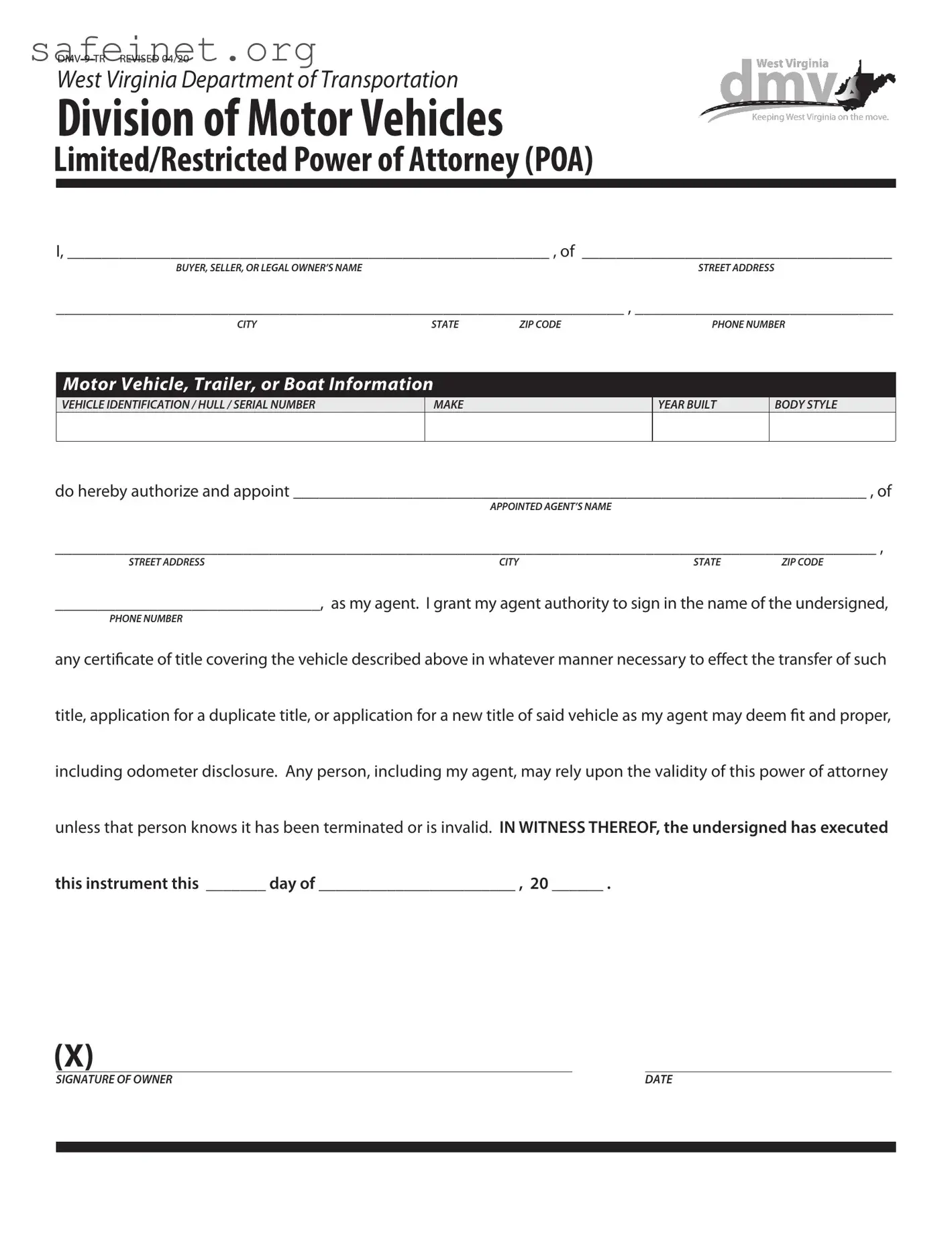What is the Vehicle POA DMV-9-TR form?
The Vehicle POA DMV-9-TR form is a Power of Attorney document specifically designed for vehicle transactions in the state of California. It allows one person, known as the "agent," to act on behalf of another person, or "principal," regarding the sale, transfer, or registration of a vehicle. This form is vital for situations where the vehicle owner cannot be present at the Department of Motor Vehicles (DMV) to handle business related to their vehicle.
Who should use the DMV-9-TR form?
This form is ideal for individuals who need to delegate authority for vehicle-related matters but cannot personally attend DMV appointments. For example, if you’re traveling, deployed, or dealing with a health issue, appointing an agent can simplify the process of managing your vehicle-related tasks.
What information is required to complete the DMV-9-TR form?
To fill out the DMV-9-TR form, you will need to provide key details about both the principal and the agent. This includes full names, addresses, and signatures. Additionally, specifics about the vehicle in question—like the Vehicle Identification Number (VIN) and license plate number—must be included. Accurate information is essential to avoid delays or issues with the DMV.
Do I need to have the DMV-9-TR form notarized?
No, notarization is not necessary for the DMV-9-TR form. However, the signatures of both the principal and agent must be original and clearly legible. Ensure that everyone involved understands their duties and has communicated openly prior to signing to prevent any misunderstandings.
How long is the Vehicle POA DMV-9-TR form valid?
The DMV-9-TR form does not have a specific expiration date set by the DMV. However, it remains valid as long as the vehicle ownership remains unchanged, and the principal does not revoke the authority granted to the agent. It's advisable for both parties to keep a copy of the completed form for their records and to stay informed about any changes in vehicle ownership.
What should I do if I need to revoke the Power of Attorney?
If circumstances change and you wish to revoke the authority granted by the DMV-9-TR form, you can do so by providing a written notice to the agent. This notice should be clear and detailed, specifying that the Power of Attorney is being revoked. Once completed, it’s a good idea to notify the DMV to ensure that all parties are aware of the change, preserving clarity and order in vehicle transactions.

